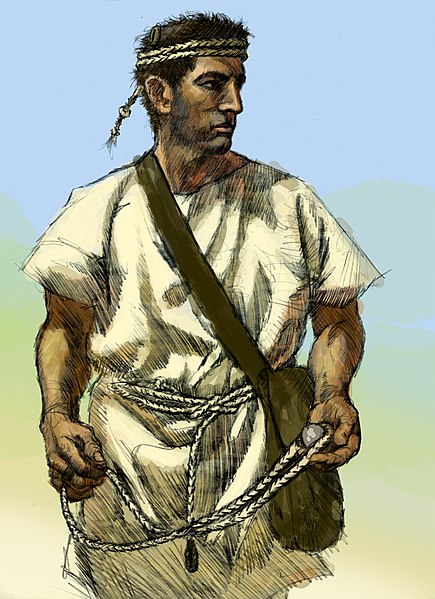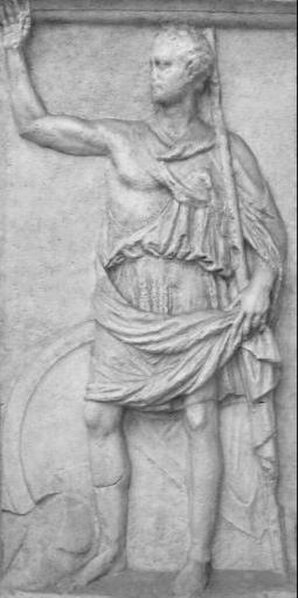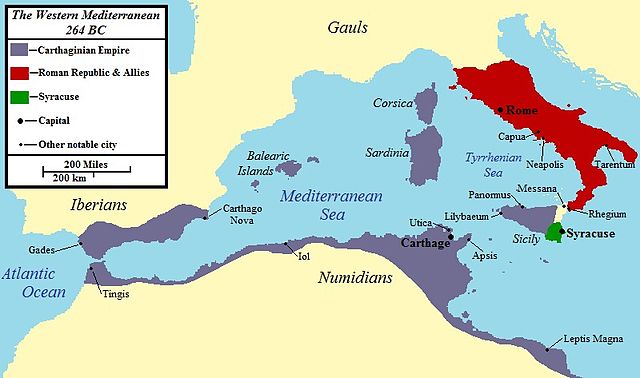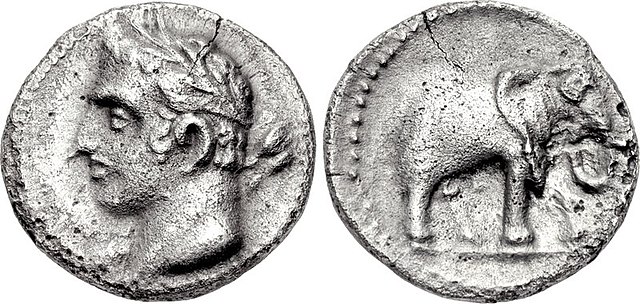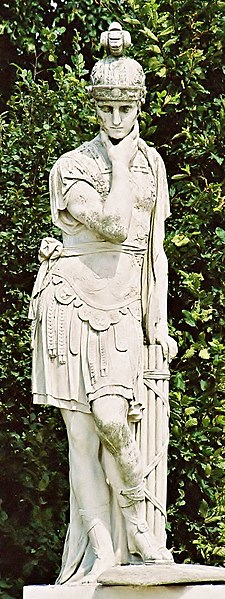The Battle of Cannae was a key engagement of the Second Punic War between the Roman Republic and Carthage, fought on 2 August 216 BC near the ancient village of Cannae in Apulia, southeast Italy. The Carthaginians and their allies, led by Hannibal, surrounded and practically annihilated a larger Roman and Italian army under the consuls Lucius Aemilius Paullus and Gaius Terentius Varro. It is regarded as one of the greatest tactical feats in military history and one of the worst defeats in Roman history, and it cemented Hannibal's reputation as one of antiquity's greatest tacticians.
John Trumbull, The Death of Paulus Aemilius at the Battle of Cannae (1773)
A modern monument near the site of the Battle of Cannae
A modern interpretation of a slinger from the Balearic Islands, famous for the skill of their slingers
Philip V of Macedon pledged his support to Hannibal following the Carthaginian victory.
The Second Punic War was the second of three wars fought between Carthage and Rome, the two main powers of the western Mediterranean in the 3rd century BC. For 17 years the two states struggled for supremacy, primarily in Italy and Iberia, but also on the islands of Sicily and Sardinia and, towards the end of the war, in North Africa. After immense materiel and human losses on both sides, the Carthaginians were once again defeated. Macedonia, Syracuse and several Numidian kingdoms were drawn into the fighting, and Iberian and Gallic forces fought on both sides. There were three main military theatres during the war: Italy, where Hannibal defeated the Roman legions repeatedly, with occasional subsidiary campaigns in Sicily, Sardinia and Greece; Iberia, where Hasdrubal, a younger brother of Hannibal, defended the Carthaginian colonial cities with mixed success before moving into Italy; and Africa, where Rome finally won the war.
Polybius
The approximate extent of territory controlled by Rome and Carthage immediately before the start of the First Punic War
A Carthaginian quarter-shekel, dated 237–209 BC, depicting the Punic god Melqart, who was associated with Hercules/Heracles. On the reverse is an elephant, possibly a war elephant; these were linked with the Barcids.
A 1777 statue of Fabius



